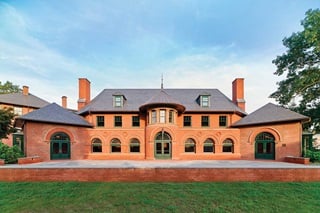Should you repair the original windows?
“The NPS places an emphasis on repairs, and so should you,” Chick says. “If the original windows can be repaired, repair them. Your historic district review panel will love you for it.” In addition to preserving a piece of history and conserving natural resources, in some cases, repairing historic windows can be less expensive. However, there are several factors to consider when choosing whether to repair or replace historic windows.
New windows will be many times more energy efficient than the existing windows. And even the efficiency of existing windows can be diminished if you decide to return them to an operating condition. Old wood windows that have been sealed shut with paint provide a better weather barrier than old operating windows, and once those seals are broken, you can expect more air infiltration, which will increase energy costs and reduce comfort levels. Old wood windows also require frequent maintenance, which can be costly. Windows exposed to extreme heat and sun, or wet climates may need touching up every couple of years.
If a building is in a smaller town, some distance away from a larger city, you may not be able to find a craftsperson with the experience and expertise to handle the job. “People who repair historic windows are more like artisans than carpenters and there’s just not as many of them out there as in years past,” Chick says. Proper training is important, not only to get the job done right but also to perform the repairs safely. Repairing old windows can expose workers and the environment to hazardous materials like lead and asbestos. If you live in a larger community, there may be an organization near you that provides a list of qualified contractors and consultants like Heritage for Ohio. And should you, or a local carpenter who’s unfamiliar with preservation work, decide to tackle the repairs on your own, there are private organizations across the country that offer online education and in-person seminars, like Minnesota-based Rethos.







